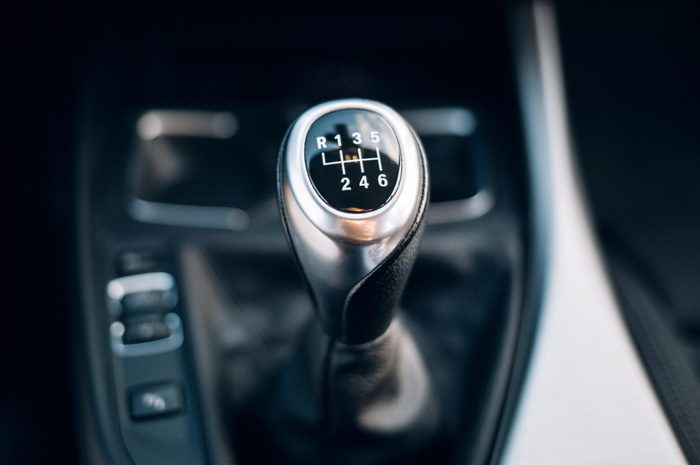Why Do Americans Drive Automatic When Most of Europe Drives Manual?

Fewer Americans are learning to drive stick shifts, but Europeans prefer them. Here's why.
Burning out the clutch and stalling as you roll back down a hill used to be part of learning how to drive in America. But these days, fewer and fewer people in the U.S. are driving cars with stick shifts. According to CarMax, 96 percent of Americans drive automatics.
And, unsurprisingly, people just aren’t buying cars with manual transmissions in the U.S. According to Edmunds.com, in 2018 they made up just two percent of all vehicles sold.
“For automakers, it will be simpler when the manual dies,” Ivan Drury, a senior analyst for Edmunds.com, told the Chicago Tribune. “It’s kind of a hassle for them to offer both, same with dealers. Given market forces, it’s going to go away.”
Contrast that with Europe, where almost everyone learns to drive a stick shift. Here are some of the reasons why.
On This Page
Why More Americans Drive Automatics
Automatics are much more utilitarian vehicles that get people from point A to point B, says Lauren Fix, the Car Coach. As such, Americans are much more likely to be doing several things at once on the road. That’s not the case in the rest of the world.
“Americans eat while they drive and they multitask while they drive,” Fix says. “Europeans do not.”
Europeans are also more likely to own higher-end cars. You would never see a manual Porsche Cayenne in the U.S., but you will in Europe.
Why Europeans Like Manual Transmissions
The preference starts early. In Europe, 15- and 16-year-olds learn to drive on Microcars with stick shifts. Fix says she doesn’t know anyone in Europe who doesn’t know how to drive one. In addition, driving a car with manual transmission forces people to be more engaged with their car and what’s going on around them.
“They pay attention to the road much more so than we do here in the United States,” Fix says. “I have been all over Europe and nobody’s on the phone while driving. Not even on speakerphone. They just don’t. That’s just not part of their culture.”
That’s not to say that the Europeans don’t have fun on the road. Germany is also home to the Autobahn, where there’s no speed limit and drivers are often going well over 100 mph.
Europeans also prefer cars with manual transmissions because they use less fuel. Thaty’s an important consideration when people in Norway pay an average of $7.82 for a gallon of gas, according to Sixt.com.
Who Still Drives Manual Cars in America?
Most carmakers in the United States have stopped making cars with manual transmissions, and pricing doesn’t really seem to matter. The idea that cars with manual transmissions are less expensive than automatics isn’t really true, according to Edmunds.com.
A few brands do still make them, including Volkswagen, Mini, and Mazda, Fix says. Porsche has also gone back to manual transmissions after switching to a PDK, or a paddle-shift, Fix says. Sports cars known for their loyal fans like Mustangs, Corvettes and Camaros are also still made with stick shifts.
“You find them to be manual because it is a joy and a thrill to drive them,” Fix says.
Though the number of people driving manual transmissions in the United States is on the wane, there are pockets of enthusiasm. CarMax customers who live in Maine, New Hampshire, and New Mexico are twice as likely to buy a car with a manual transmission than the average CarMax customer.


